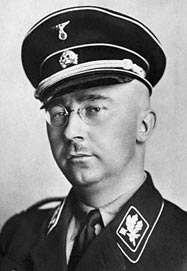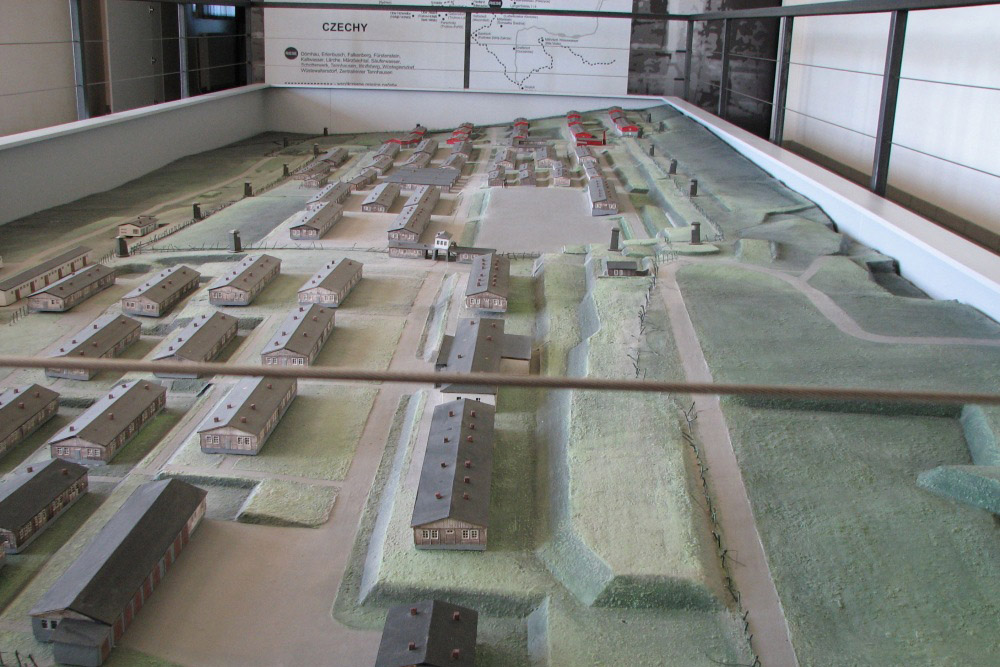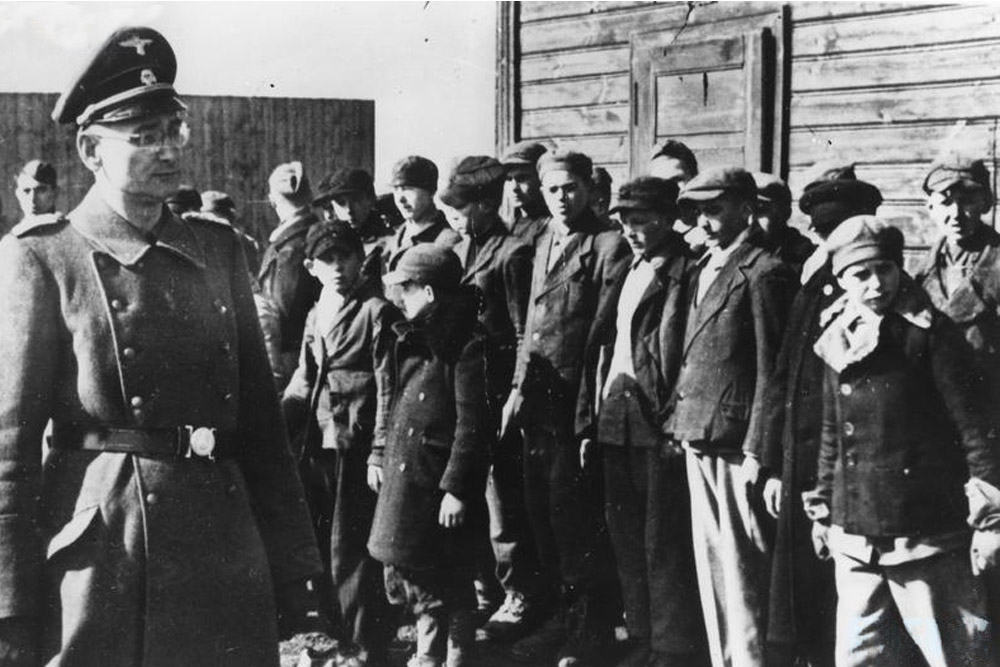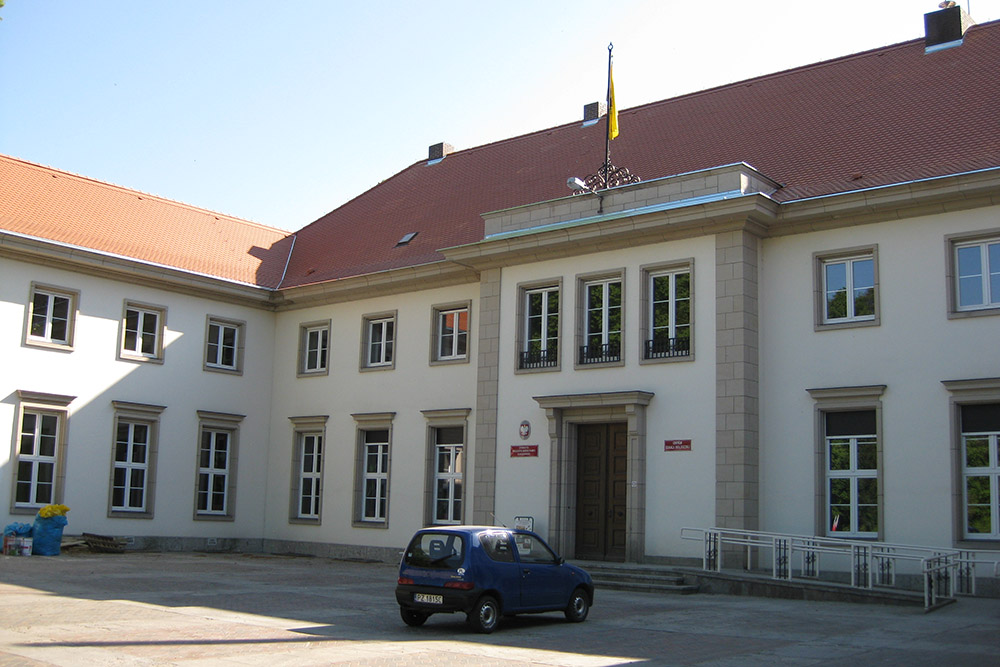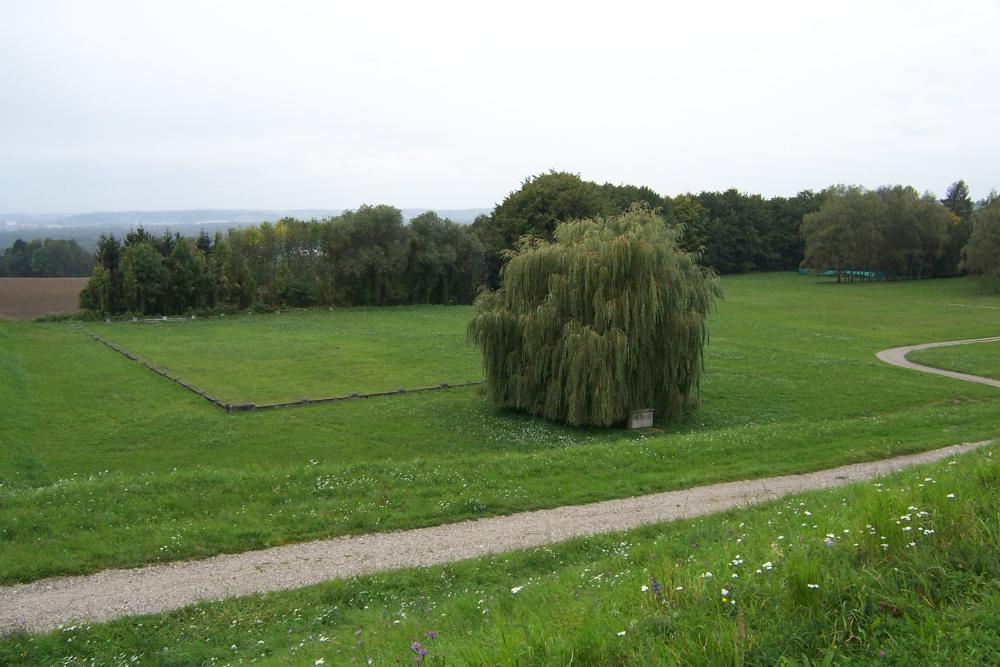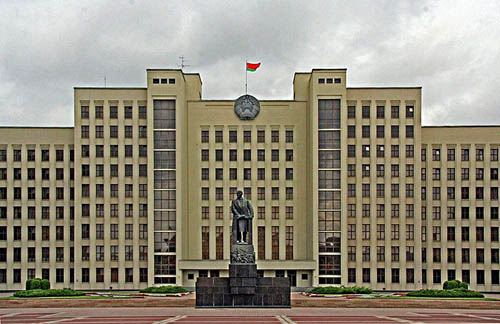Backbone of the SS organization
Just like the SA, the SS was established as a semi-professional organization. The men who joined the Stoßtrup Adolf Hitler in 1923 and the SS in 1925 did so voluntarily out of their political conviction. In the course of the years however, the SS evolved into an organization which encompassed various professional departments. It became a unit in which a large number of people worked full time as official or military. The Allgemeine-SS was the backbone of it and out of this original nucleus, various units such as the Sicherheitsdienst, the Waffen-SS and the Totenkopfverbände came into being.
The membership database of the Allgemeine-SS contained full time and part time members. Apart from the active members, it was also made up of various non-active or honorary members. It was set up on a military base and during the war, many members were transferred to the Waffen-SS. Hence, SS men often held ranks in both the Allgemeine and the Waffen-SS. Older members and those qualified unfit for duty in the Waffen-SS for reasons of health became managers and others within the Allgemeine SS retained their functions. They occupied themselves with for instance with political, racial, ideological or security issues.
Contrary to the Waffen-SS, the Allgemeine-SS remained a party organization which of course was funded by the party. From 1939 onwards, the Waffen-SS was entirely included in the national budget. Within the 12 main offices of the SS, members holding a function within the Waffen-S were represented as well as those with a function within the Allgemeine-SS. Oswald Pohl for instance, head of the SS-WVHA, held the rank of Untersturmführer in the Allgemeine-SS until 1939 but he was subsequently promoted to Obergruppenführer in the Waffen-SS while his tasks such as administration and finance, were not specifically part of that unit.
Without starting an extensive explanation, it can be stated that the Allgemeine-SS was the civilian and the Waffen-SS the military branch of the SS. Men holding a rank within the Allgemeine SS were closely involved in other elements of the SS making it difficult to classify the Allgemeine-SS. In addition to holding a rank within this unit, many SS men held ranks in the Waffen-SS, the Sicherheitsdienst, the Totenkopfverbände or the German police. Certain SS men even held ranks in more than two of the units mentioned earlier.
Oberabschnitte and Abschnitte
The organization of the Allgemeine-SS was made up of various formations. The Oberabschnitt was the largest formation and the Rotte the smallest. Members of these formations were mainly active in the years prior to the war. They mostly occupied themselves with various political tasks and were deployed as auxiliary police. During the war, members of the Allgemeine-SS were gradually incorporated in the Waffen-SS and other important operational branches of the SS. Its function during the war was mainly of administrative and executive nature, responsible for instance for the organization of the Reichsführung-SS and the (Höhere) SS und Polizeiführer. The original build-up of the various formations mentioned below, was retained during the war however. The staffing of the various formations was minimal though.
Formations from the largest to the smallest:
- Oberabschnitt
- Abschnitt
- Standarte
- Sturmbann
- Sturm
- Zug
- Gruppe
- Trupp
- Rotte
Oberabschnitt
This designation of the SS main districts was introduced in November 1933. These districts stemmed from the former classification of the districts of the Sturmabteilung When the Schutzstaffel was established, the Gauführer were in charge of the local independent SS units but most of them were directly answerable to the NSDAP head office in Munich. SS-Gauführer were mostly high ranking SA members or leaders of the party as SS ranks and the status of commander didn't exist in the early days of the SS.
The first command structure, geographically classified, of the SS was made up of the SS-Oberbereiche East, West and Central Germany. In the period between 1930 and 1933, this classification was expanded and the individual areas were split up into SS-Gruppen. In the end, from November 1933 onwards, this command structure was split into SS-Oberabschnitte or main districts. When the function of HSSPF was introduced in November 1937, the person holding this function was usually the leader of an Oberabschnitt as well. In this area, the HSSPF was in charge of all SS and police organizations not under command of the army.
The staff of an Oberabschnitt was headed by a Stabsführer or chief of staff. His most important officers were a Verwaltungsführer (administrative officer), an Oberabschnittartz (medical officer), an Oberabschnitt Ausbildingsführer (training officer), an Oberabschnitt Personalchef (personnel officer) and a Nachrichtenführer (liaison officer). In addition to the subordinate Abschnitte with the inherent Standarten, in most cases these Oberabschnitte also had a Nachrichtensturmbann (liaison battalion) and a Pionierbataillon (battalion of engineers) at their disposal and during a certain period, it also had Reiterstandarte or cavalry regiments at their disposal. The commanders of these units usually made up an integral part of the staff of a main district just like liaison officers of NSDAP organizations and the army. An important pre-war task of these main districts was recruitment and each main district had a number of recruiting offices at its disposal.
The composition of an Oberabschnitt or previous equivalents was changed regularly in the early years of the SS. In November 1932, Oberabschnitt Süd for instance consisted of Abschnitte I, IX and X and in April 1936, Abschnitte I and XXXII were added to this main district. Oberabschnitte mostly emerged from SS-Gruppen and Abschnitte. Numerous Oberabschnitte were renamed once or more or were allocated different geographical responsibilities.
Between 1933 and 1945, the Oberabschnitte mentioned below, have existed in the Third Reich. The names are the definite designations of the main district involved. SS-Oberabschnitt ‘Spree’ for instance had its roots in Oberführerbereich ‘Ost’, in August 1930 it was renamed SS-Gruppe ‘Ost’ and on March 1, 1932 and November 16, 1933 renamed again as SS-Oberabschnitt ‘Ost’. This designation was eventually changed into SS-Oberabschnitt Spree on November 14, 1939. In the list below, the date of establishment of this district is listed as August 1930, the original date of establishment of this main district. These districts existed until May 1945, except SS-Oberabschnitt Ukraine which was dissolved on April 20, 1944.
- Alpenland - June 1, 1939
- Böhmen-Mähren - April 1, 1944
- Donau - February 15, 1934
- Elbe - November 16, 1933
- Fulda-Werra - January 1, 1937
- Main - April 1, 1936
- Mitte - August 10, 1933
- Nord - April 20, 1940
- Nordost - December 15, 1933
- Nordsee - October 1, 1932
- Nordwest - May 23, 1940
- Ost - March 3, 1941
- Ostland - December 1, 1941
- Ostsee - April 1, 1936
- Rhein-Westmark - January 1 1934
- Spree - August 1930
- Süd - 1929
- Südost - March 15, 1932
- Südwest - November 16, 1933
- Ukraine - December 1, 1941
- Warthe - October 26, 1939
- Weichsel - November 9, 1939
- West - November 1930
SS-Abschnitte, these were on a lower level than the Oberabschnitte. A total of 45 of these districts have existed in Germany and adjacent countries like Austria and Czechoslovakia. Parts of Poland and France were also divided in Abschnitte. Before these were introduced, Brigaden were on a comparable level. In theory, the Brigade was answerable to the NSDAP Gau but in reality, the numerical strength of the SS was insufficient to establish a complete Brigade in each Gau. Brigaden existed until March 1931 and were replaced by SS-Abschnitte
Each Abschnitt consisted of numerous Standarten of which the composition within the Abschnitt was subject to change in the period between 1931 to 1945. Unlike the Oberabschnitte, they had no names but were designated by Roman numerals. Its members could be recognized by a cuff title (sleeve emblem) with the location and origin of the unit on it. The first seven were established in 1931 and most of the others in the period that ended in 1939.
Fuß-Standarten and Reiterstandarten
Standarten (Fuß-Standarten) were the basic units of the Allgemeine-SS. At the time the SS was established, these units numbered about ten men. 1. SS-Standarte was officially established on November 9, 1925, exactly two years after the putsch in Munich although the unit was only known on paper as Standarte. They were first designated with Arabic and subsequently with Roman numerals. When Abschnitte were designated with Roman numerals however, Standarte eventually were renamed in Arabic numerals and in strength, they were comparable to a military regiment. Apart from the Fuß-Standarte or infantry, there also were Reiter-Standarte or cavalry which will be dealt with in a later paragraph.
Each Standarte had its own cuff title (sleeve emblem) showing the number of the unit. In case the Standarte had a honorary name, this was shown as well. Standarte were sometimes named after the Nazis who had lost their lives during the struggle for power by Hitler and the NSDAP. Some Standarte however were named after Nazis who had passed away after January 30, 1933. 1. SS-Standarte for instance was named after Julius Schreck, Hitler's driver and the first leader of the SS who had died in 1936. By the way, Stürme regularly had honorary names as well. Apart from honorary names some units had nicknames, based for instance on the location where the unit was stationed.
Each Standarte was made up of various Sturmbanne or battalions and usually had a reserve unit and a Sanitätsstaffel or medical unit. So-called Ergänzungs-Sturmbanne or reserve battalions were units undergoing military training and which would eventually be incorporated into the Waffen-SS in war time. A Sturmbann was usually made up of three to five Stürme or companies, Züge or Trupps and Schäre were at a lower command level respectively. The smallest and lowest ranking unit within the Allgemeine-SS was the Rotte. At the pinnacle of its strength in the years prior to the war, a Sturmbann consisted of 500 to 800 men and a Sturm of 120 to 180 men.
Reiterabschnitte and Reiterstandarten.
Apart from normal Abschnitte and Standarten, the Allgemeine-SS had cavalry units at its disposal as well. These units had their roots in equestrian clubs which Himmler took up in his SS. Members of these clubs usually came from gentleman farmers and owners of real-estate and by their appointment in the SS, Himmler gained more influence on this group. The mounted SS came into being in early 1931 when a Berittene SS-Abteilung was established which formed a base for the SS-Reitersturm in the same year.
Contrary to Fuß-Standarten, SS- Reiterstandarte were directly incorporated in a SS-Oberabschnitt during the longest period of their existence. Each of these was made up of five or more Reiterstürme, a Sanitätsstaffel or medical unit and a Trompetterkorps or trumpet band. Some SS-Oberabschnitte had a Reiterabschnitt at their disposal but from October 1936 onwards, they were directly subordinate to an SS-Oberabschnitt.
Ranks
| SS rank: | Abbreviation: | Equivalent: |
| Reichsführer-SS | RFSS | |
| SS-Führer: | Officers: | |
| SS-Oberstgruppenführer | Ostgruf | General |
| SS-Obergruppenführer | Ogruf | Lieutenant-General |
| SS-Gruppenführer | Gruf | Major-General |
| SS-Brigadeführer | Brigaf | Brigadier |
| SS-Oberführer | Obf | |
| SS-Standartenführer | Staf | Colonel |
| SS-Obersturmbannführer | Ostubaf | Lieutenant-Colonel |
| SS-Sturmbannführer | Stubaf | Major |
| SS-Hauptsturmführer[1] | Hstuf | Captain |
| SS-Obersturmführer | Ostuf | 1st Lieutenant |
| SS-Untersturmführer[2] | Ustuf | 2nd Lieutenant |
| SS-Unterführer | NCOs | |
| SS-Sturmscharführer | Stuscha | Adjutant-NCO |
| SS-Hauptscharführer[3] | Hscha | Sergeant-Major |
| SS-Oberscharführer[4] | Oscha | Sergeant 1st class |
| SS-Scharführer[5] | Scha | Sergeant |
| SS-Unterscharführer[6] | Uscha | |
| SS-Rottenführer | Rttf | Corporal 1st class |
| SS-Sturmmann | Strmm | Corporal |
| SS-Mann | Soldier 1st class | |
| SS-Anwärter | Soldier | |
| SS-Bewerber[7] |
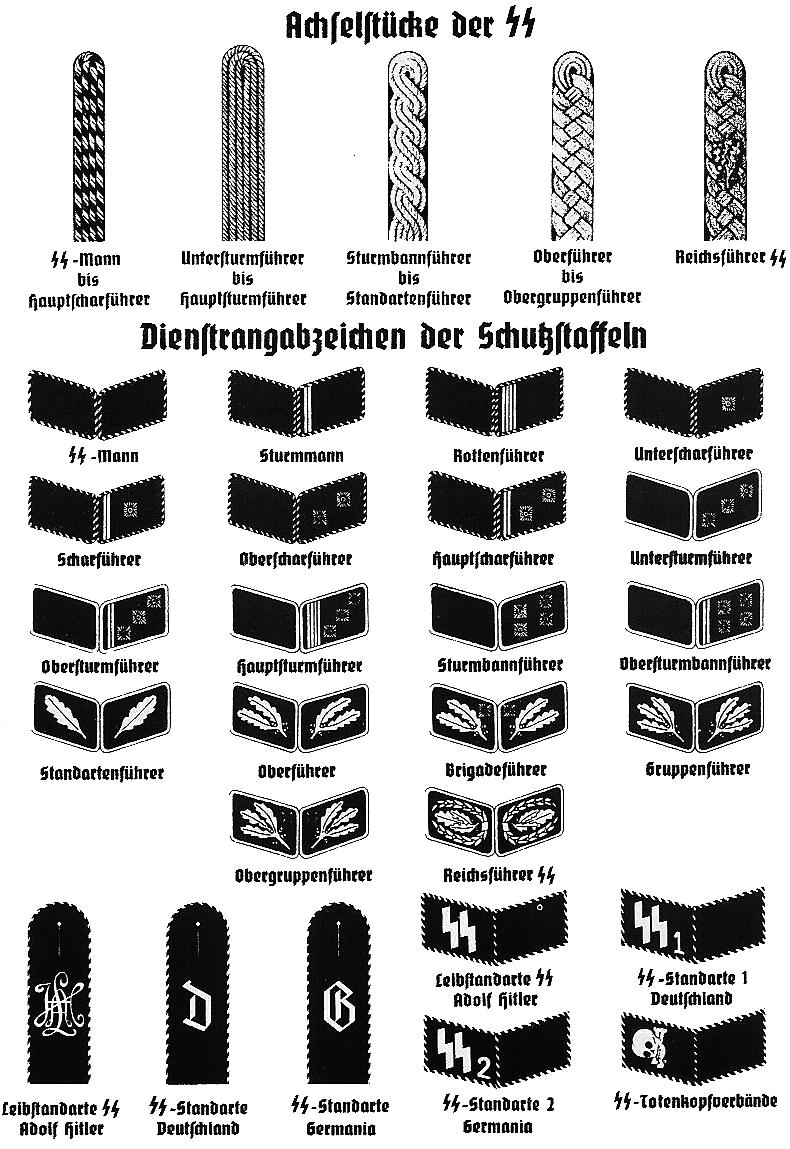
Collar patches showing rank and unit of the Gesammt-SS until 1942 Source: Organisationshandbuch der NSDAP (1939).
Notes
- SS-Sturmhauptführer up to October 15, 1934
- SS-Sturmführer up to October 15, 1934
- SS-Obertruppführer up to October 15, 1934 and until January 1938 SS-Stabsscharführer
- SS-Truppführer up to October 15, 1934
- SS-Oberscharführer up to October 15, 1934
- SS-Scharführer up to October 15, 1934
- SS-Anwärter up to October 14, 1934
Information
- Article by:
- Kevin Prenger
- Translated by:
- Arnold Palthe
- Published on:
- 17-05-2023
- Feedback?
- Send it!
Related sights
Related books
Sources
- GELLATELY, R., Neurenberg-gesprekken, J.M Meulenhoff, Amsterdam, 2004.
- KNOPP, G., Hitlers moordenaars, Het Spectrum, Utrecht, 2004.
- SNYDER, L., Encyclopedia of the Third Reich, Wordsworth, Hertfordshire (UK), 1998.
- YERGER, M., Allgemeine-SS, Schiffer, Atglen, 1997.
- Nazi Conspiracy and Aggression. Vol. II. USGPO, Washington, 1946, pag.173-237. (link)
- Axis History
- Wikipedia (Duits) - Schutzstaffel
- Wikipedia (Duits) - Organisationsstruktur der SS
- Wikipedia (Engels) - Schutzstaffel
